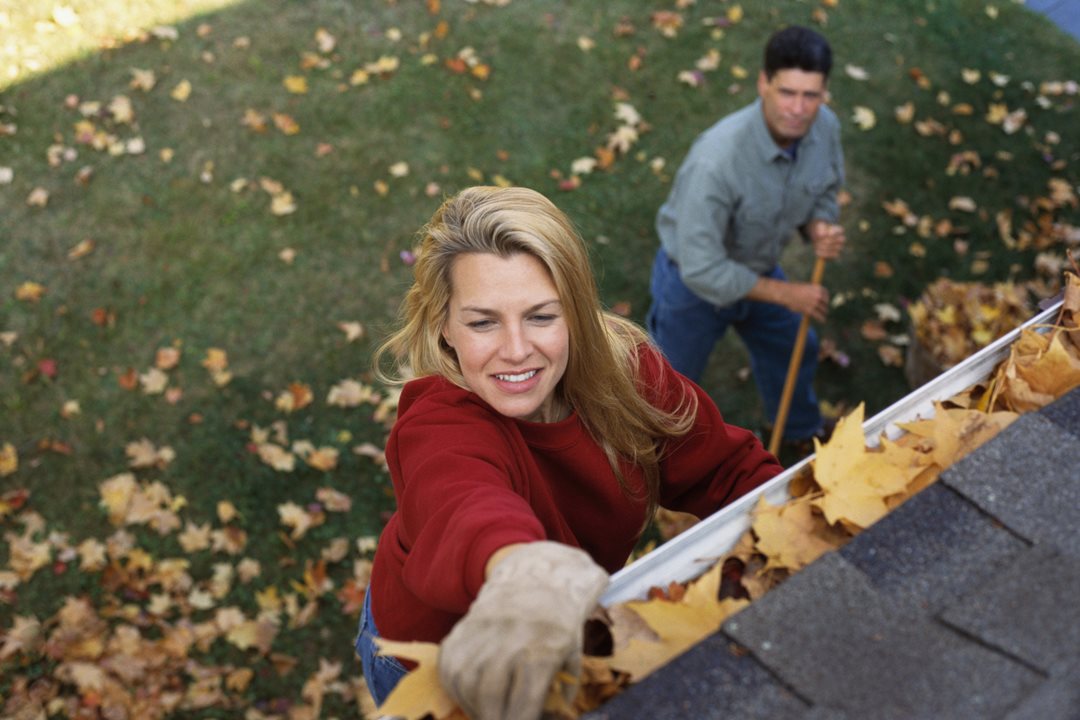Articles
MAINTAIN: Simple steps to prevent water damage | PEMCO
August 29, 2025
by PEMCO Insurance
 How to MAINTAIN plumbing, pipes, and hoses to prevent water damage
How to MAINTAIN plumbing, pipes, and hoses to prevent water damage
Is your washer plotting to turn your living room into a swimming pool? About 25% of home claims are related to water damage. And they add up to more than a “drop in the bucket!” A five-year study from the Insurance Information Institute found that nationally, repair costs averaged $13,954 per claim for water damage from things like burst appliance hoses, failed pipes, overflowing gutters, and leaky water heaters.
A water leak can happen to anyone, but the good news is you can take little steps throughout the year to prevent the preventable – beginning with PEMCO’s Maintain, Inspect, Monitor roadmap.
Check out our top 10 tips for maintaining your water-wise home:
How to reduce your risk of water leaks in fall and winter
1. Clean and realign gutters.
Mud splashed on your siding, mystery puddles, and cascading “gutterfalls” during rain showers are all signs your gutters need love! They’re likely clogged or misaligned so water flows over the side instead of into downspouts. Wayward water can flood your crawlspace, wick under doors, or during thaws, force its way under your shingles and into your walls.The fix: We love professional gutter cleaning services since they have the equipment to stay safe on ladders and often can handle minor gutter repairs at the same time. PEMCO’s gutter cleaning video can get you started if you want to DIY. (Do it twice a year, fall and spring.)
2. Unclog downspouts and underground drainpipes.
If your gutters still overflow, you likely have a blocked downspout or clogged underground drainpipe.The fix: Hire a gutter company (or if you’re comfortable and willing, DIY) to disconnect downspouts at the elbow and clean out needles and debris. If the clog extends to the drainpipe, hire a rooter service to camera-scope the pipe to reveal blockages. Often they can use water jets and cutting tools to remove invasive tree roots and get water flowing again. If your downspouts empty onto the ground, use extenders to channel water away from your foundation or connect downspouts to rain barrels to collect water for the garden.
3. Protect outside faucets.
In cold weather, water trapped in garden hoses can back up, freeze, and split the pipe, causing an in-wall leak once the ice thaws.The fix: Disconnect garden hoses. If the faucet has an indoor valve, turn it off and open the faucet to drain any trapped water. Cover the faucet with a foam protector.
4. Insulate exposed pipes.
Uninsulated pipes in your attic, crawlspace, workshop, or garage can freeze and rupture during cold snaps – spewing water once they thaw.The fix: Wrap pipes in insulation and plug cold-air leaks around pipe installations with caulk or insulation. You also can use foam insulation, heat tape, or pipe sleeves to protect your pipes from the cold. Learn more with PEMCO’s winterizing pipes video.
5. Test your sump pump
Your sump pump (if you have one) can help protect your basement from runoff.The fix: Pour a bucket of water into the sump pit to test that the pump turns on and drains the water. Consider installing a sump pump alarm (connected to your smartphone) that will alert you if the pump fails or the water level rises too high. If you already have an alarm, replace the batteries.
6. Protect pipes along outside walls.
They’re more vulnerable to freezing and bursting when temps plummet.The fix: When freezing is in the forecast, open cabinet doors under kitchen and bathroom sinks to allow warm air to circulate, and run a trickle of water until outdoor temps climb. Moving water is less likely to freeze.
7. Get rid of bark mulch near your foundation.
It absorbs and holds moisture and, if it’s piled too deep, it can rot your siding and invite insects.The fix: Opt for gravel or decorative rock that allows water to drain away from your home. As a bonus, rock also acts as a buffer against embers from a wildfire.
How to stop appliance water leaks year-around
8. Replace worn or damaged hoses.
Also replace washers or seals on your faucets, toilets, washing machines, dishwashers, and ice makers.The fix: Upgrade to stainless steel braided hoses, as they generally last longer than the rubber options that likely came with your appliances. Replace hoses every five years, regardless of which kind you have, but do it immediately if you see signs of wear like kinks, bulges, moisture, or discoloration.
Also, take care when moving appliances like washers and refrigerators to clean. Their hoses can easily get overextended or crimped. Replace hoses immediately if you see signs of wear like kinks, bulges, moisture, or discoloration.
9. Maintain your water heater.
They’re often ignored until the water suddenly runs cold, but water heaters are prone to rust and corrosion that can lead to bursting or, more commonly, slow leaks that rot subflooring. They have a surprisingly short lifespan of just eight to 12 years.The fix: Twice annually, schedule a professional service (or if you’re comfortable and willing, DIY) to include flushing and sediment removal. Having seen so many failed water heaters on the job, many of our adjusters replace theirs every 10 years.
How much to budget for routine home maintenance
10. Set aside money for home repairs.
Just as you might have a nest egg building for your annual family vacation or holiday expenses, why not do the same for your home?The fix: Consider saving 1 to 4% of your home’s value per year for large maintenance projects and repairs.
Ready to take the next worry less, live more steps to keep your home, things, and loved ones safe? Check out our tips to Inspect and Monitor the water systems in your home.
Share on social media